After weeks with the DJI Mavic 4 Pro, and its 360° gimbal and LiDAR obstacle sensing blew my mind
The Mavic 4 Pro is the drone equivalent of a sports car

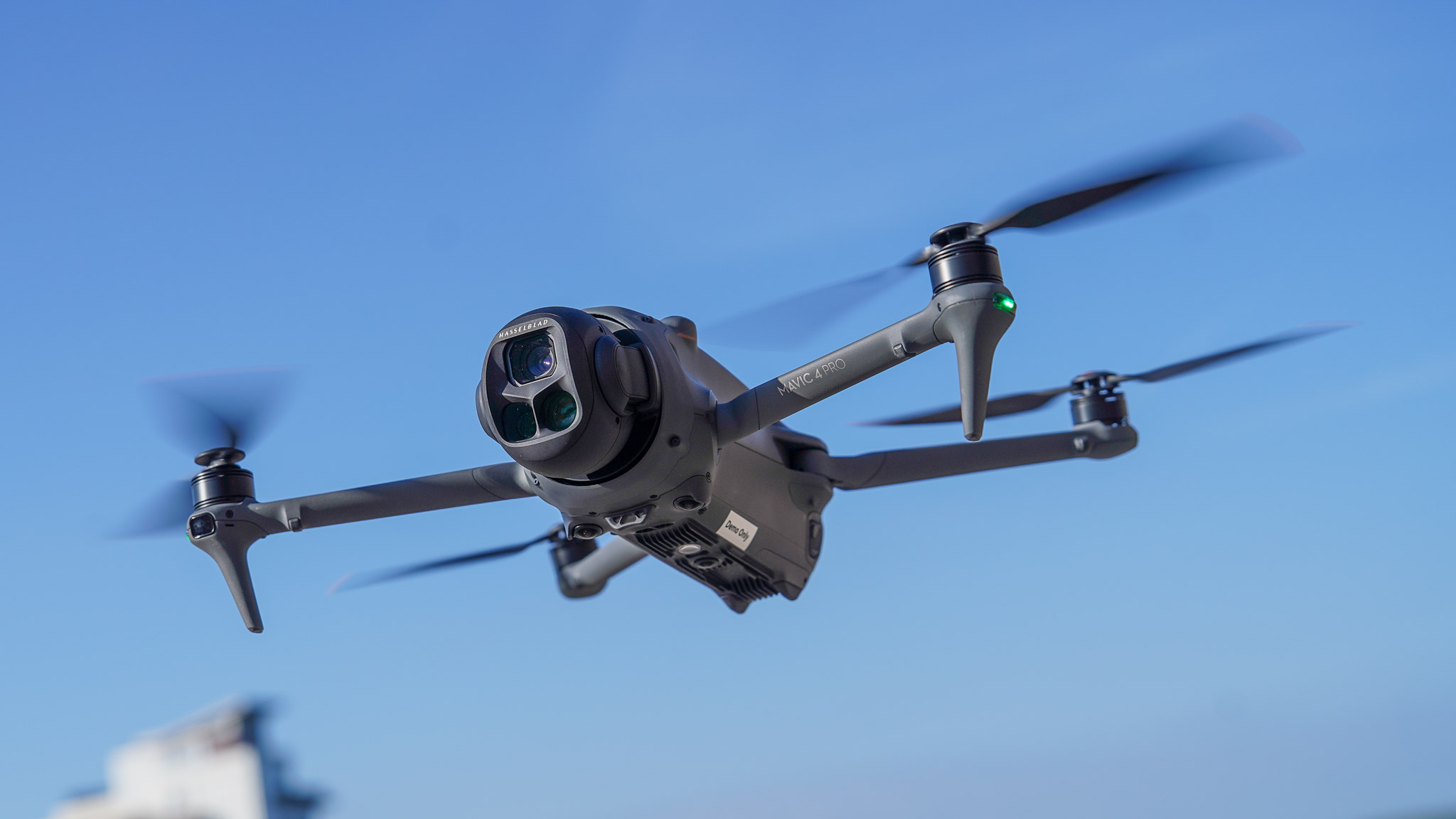
DJI’s Mavic 4 Pro is a flying fortress for creators, packed with LiDAR, a wild 360° gimbal, and killer cameras. It’s bigger, bolder, and built to impress. Sure, it’s not cheap, but if you’re ready to level up your aerial game, this beast absolutely delivers the goods.
-
+
Infinity Gimbal with full 360° rotation
-
+
LiDAR sensor for better obstacle avoidance
-
+
GPS-free RTH
-
+
Improved tri-camera system
-
+
Better transmission range
-
+
Larger internal storage
-
+
Faster setup
-
+
Maintains flight time despite upgrades
-
-
Heavier and slightly bulkier than the Mavic 3 Pro
-
-
Higher cost barrier for non-pros
-
-
Medium tele camera remains more or less unchanged
Why you can trust T3

It’s been two years since drone manufacturer extraordinaire DJI released a Mavic drone. This line is aimed at professional creators, and is larger and more expensive than smaller camera drones such as the DJI Flip and the DJI Neo.
Rumours have been steadily circulating online about the imminent launch of the Mavic 4 Pro, so I can’t say I was too surprised when DJI reached out with an opportunity to test the new drone a month ago.
Well, I might not have been surprised, but I was excited nevertheless, as the Mavic 4 Pro promised serious performance upgrades, longer flight time, better transmission range, LiDAR, and a lot more. All for the same recommended price as the amazing DJI Mavic 3 Pro was sold for back in the day.
After testing the Mavic 4 Pro for a few weeks, I’m happy to confirm that it’s the best drone for those who take aerial content creation seriously, but maybe not as seriously as getting an Inspire 3. Everyone else, if you have the money and the appropriate pilot's licence, this is the one to get!
DJI Mavic 4 Pro review
Price and availability
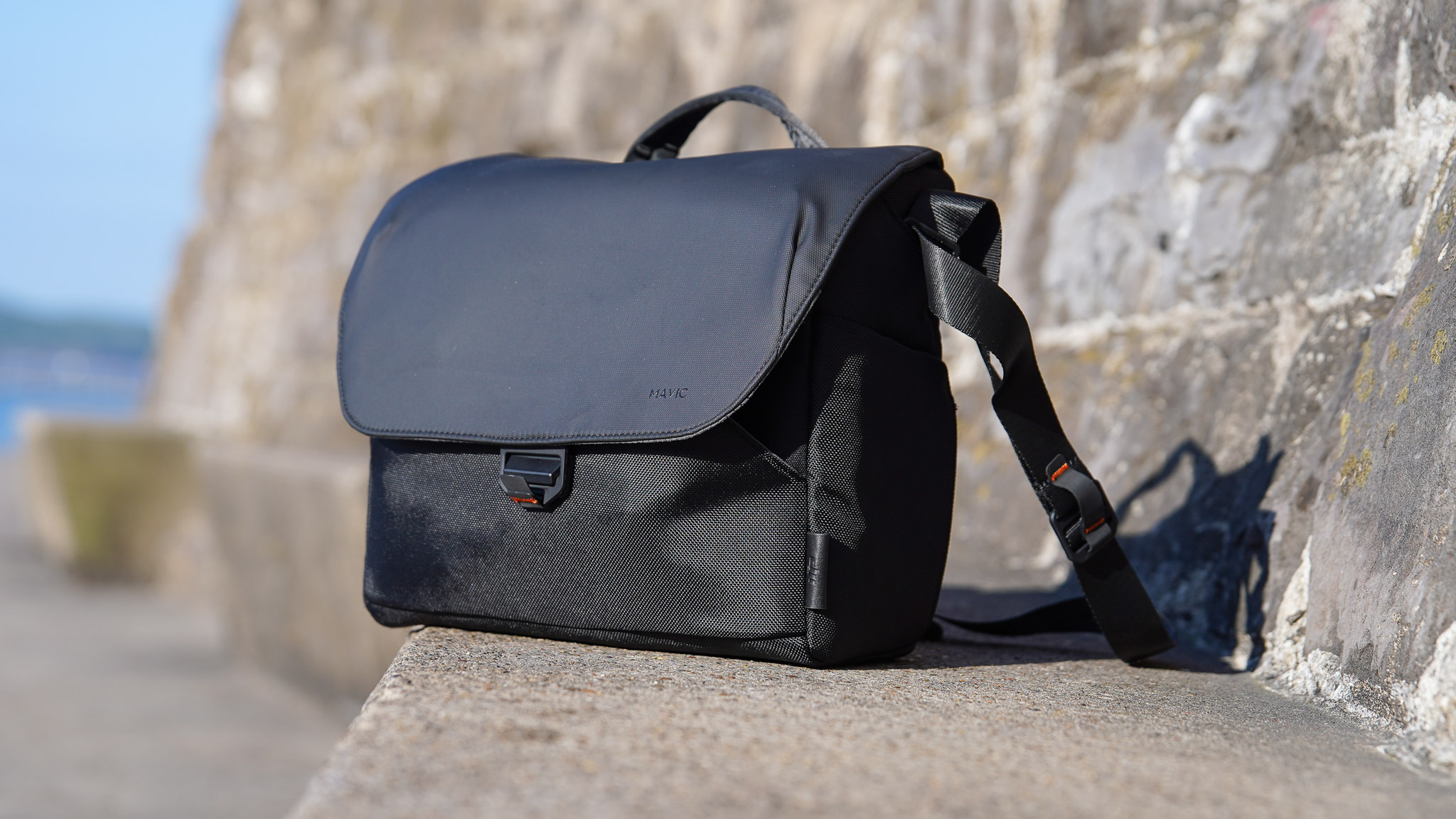
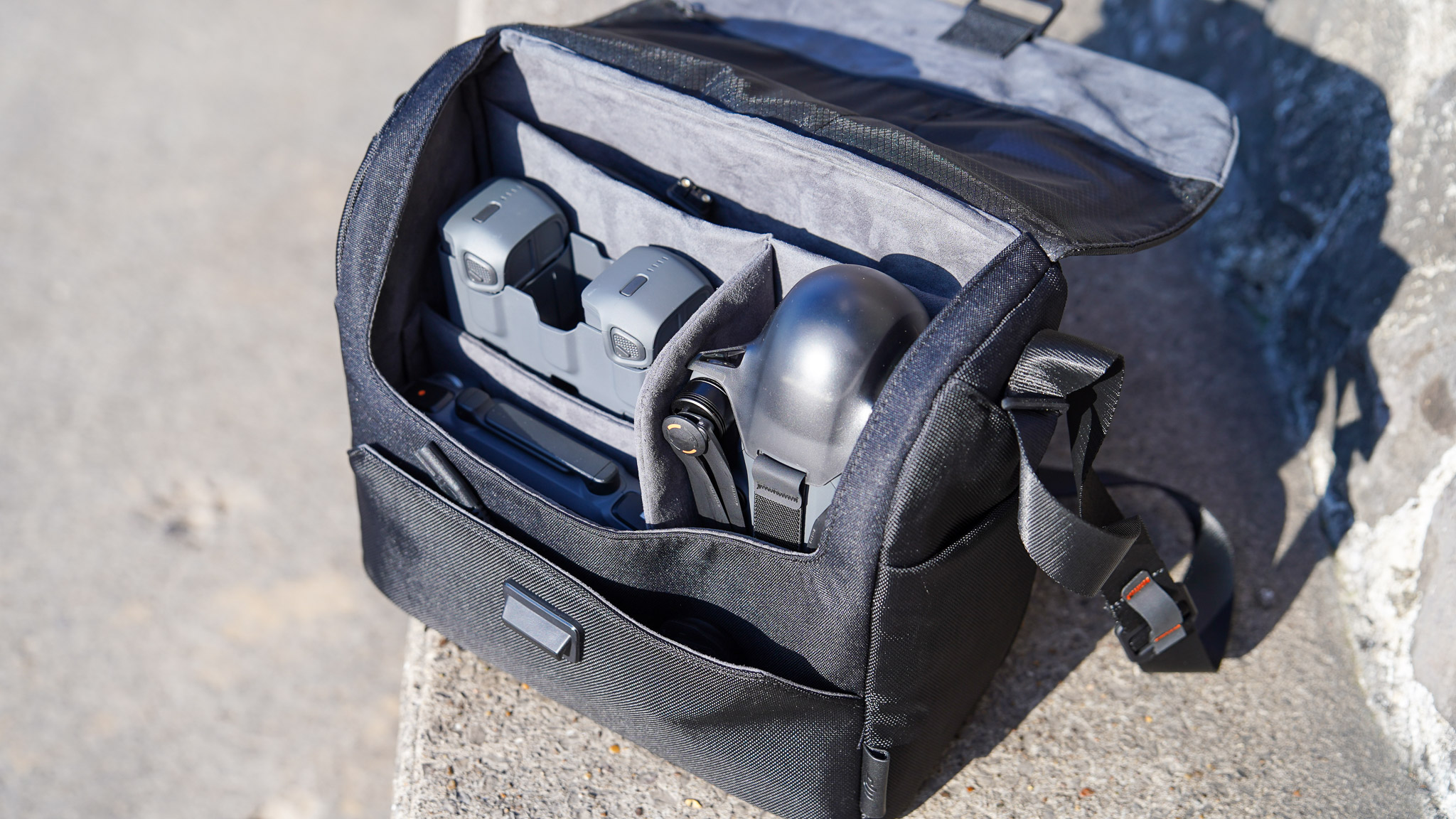
The Mavic 4 Pro was announced in May 2025 and is available now at DJI UK and DJI AU with prices from £1,879/ €2,099/ AU$ 3,099. It’s the same original retail price of the Mavic 3 Pro, even though these days, you can buy the latter for cheaper, even directly from the brand.
Like all other DJI drones, the Mavic 4 Pro is available in various bundles. The DJI Mavic 4 Pro Fly More Combo (includes the amazing DJI RC 2 controller) costs £2,459, €2,699/ AU$ 4,039. The DJI Mavic 4 Pro 512GB Creator Combo, which adds the DJI RC 2, three batteries, the parallel charging hub, and a carry case, sells for £3,209/ €3.539/ AU$ 5,359.
The DJI RC Pro 2 controller, on its own, has a recommended retail price of £879/ €999, AU$ 1,529. The company is yet to disclose US prices and availability, likely due to its strained relationship with the country’s legislative system. Check out DJI US for the latest information on this. Also, visit T3's best DJI deals roundup for the latest offers on the Mavic 4 Pro and others.
Get all the latest news, reviews, deals and buying guides on gorgeous tech, home and active products from the T3 experts
I used the DJI Mavic 4 Pro 512GB Creator Combo for the test, and I have a small gripe with it, which some of you might find nitpicky, but I must mention it: the carry bag could be more box-like, so it fits inside backpacks better. Most pros have custom-made cases (I assume), but enthusiasts like me would prefer to integrate the case into a backpack that also contains my camera.
The carry case is too big to do that. Not just that, but the parallel charging hub’s 240w charger cable doesn’t fit into the bag, either. Well, it fits, just about, but there isn’t dedicated space for it, which is a shame. For this much money, I’d expect the drone and its accessories to be perfect (sorry, DJI).
Specifications
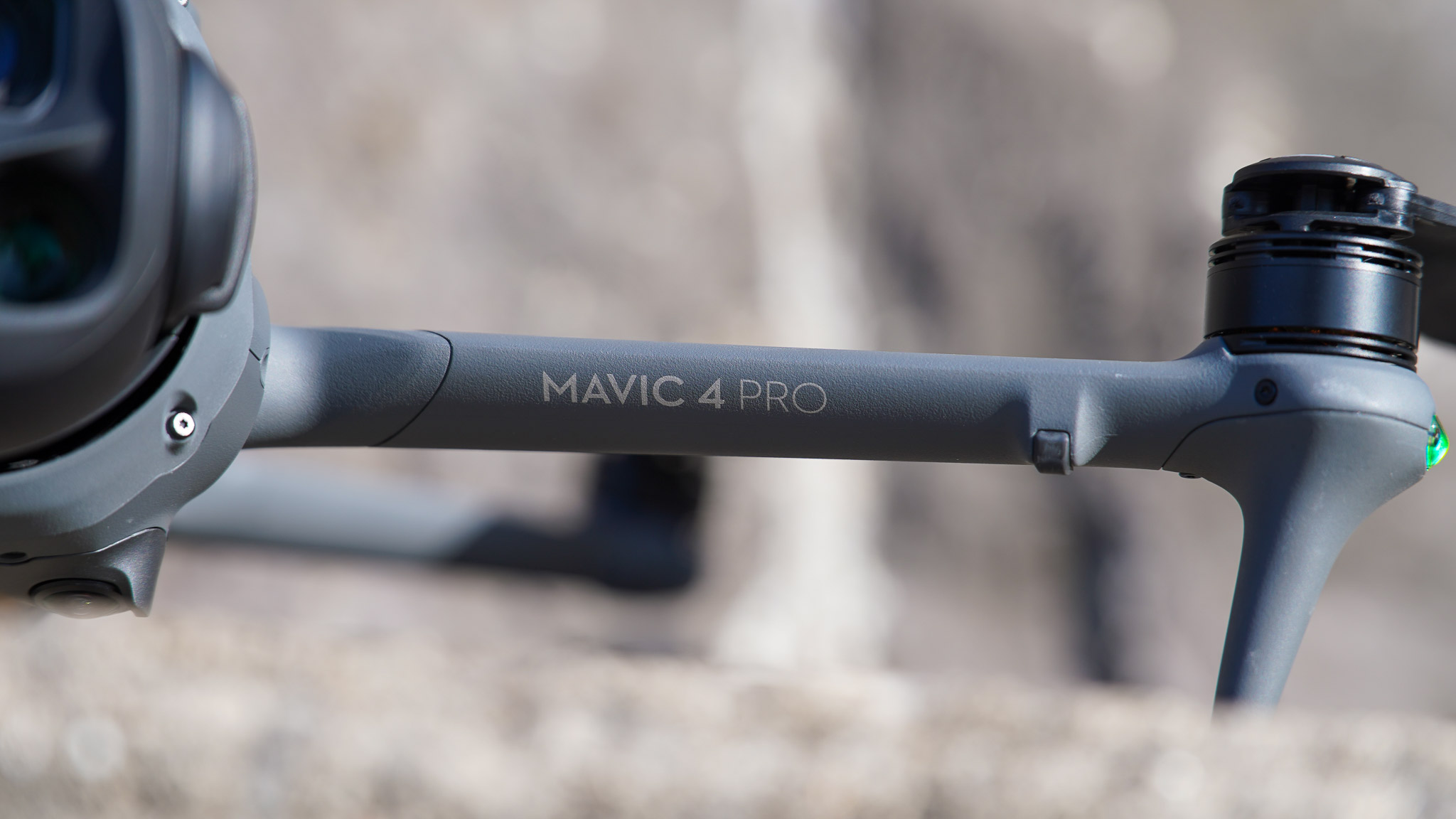
- Dimensions (L×W×H): 328.7 x 390.5 x 135.2 mm (unfolded), 257.6 x 124.8 x 106.6 mm (folded)
- Weight: 1,063 g
- Max flight time: approx. 51 mins
- Max. transmission range: 41km (technical limit), 30 km (FCC), 15 km (CE/ SRRC/ MIC)
- Wind resistance: 12 m/s (39.4 ft/s)
- Built-in GPS: yes, GPS + Galileo + BeiDou (no GLONASS)
- Internal storage: 64GB (Mavic 4 Pro), 512GB (Mavic 4 Pro Creator Combo)
- Sensor: 4/3 CMOS (Hasselblad Camera), 1/1.3-inch CMOS (Medium Tele Camera), 1/1.5-inch CMOS (Tele Camera)
- FOV: 72° (Hasselblad Camera), 35° (Medium Tele Camera), 15° (Tele Camera)
- Max photo resolution: 100MP (Hasselblad camera)
- Max video resolution: 6K@60fps, 4K@120fps (Hasselblad Camera), 4K@120fps (Medium Tele Camera), 4K@100fps (Tele Camera)
- Image stabilisation: 3-axis mechanical gimbal (tilt, roll, pan)
- Connectivity: WiFi 6
Design and build quality
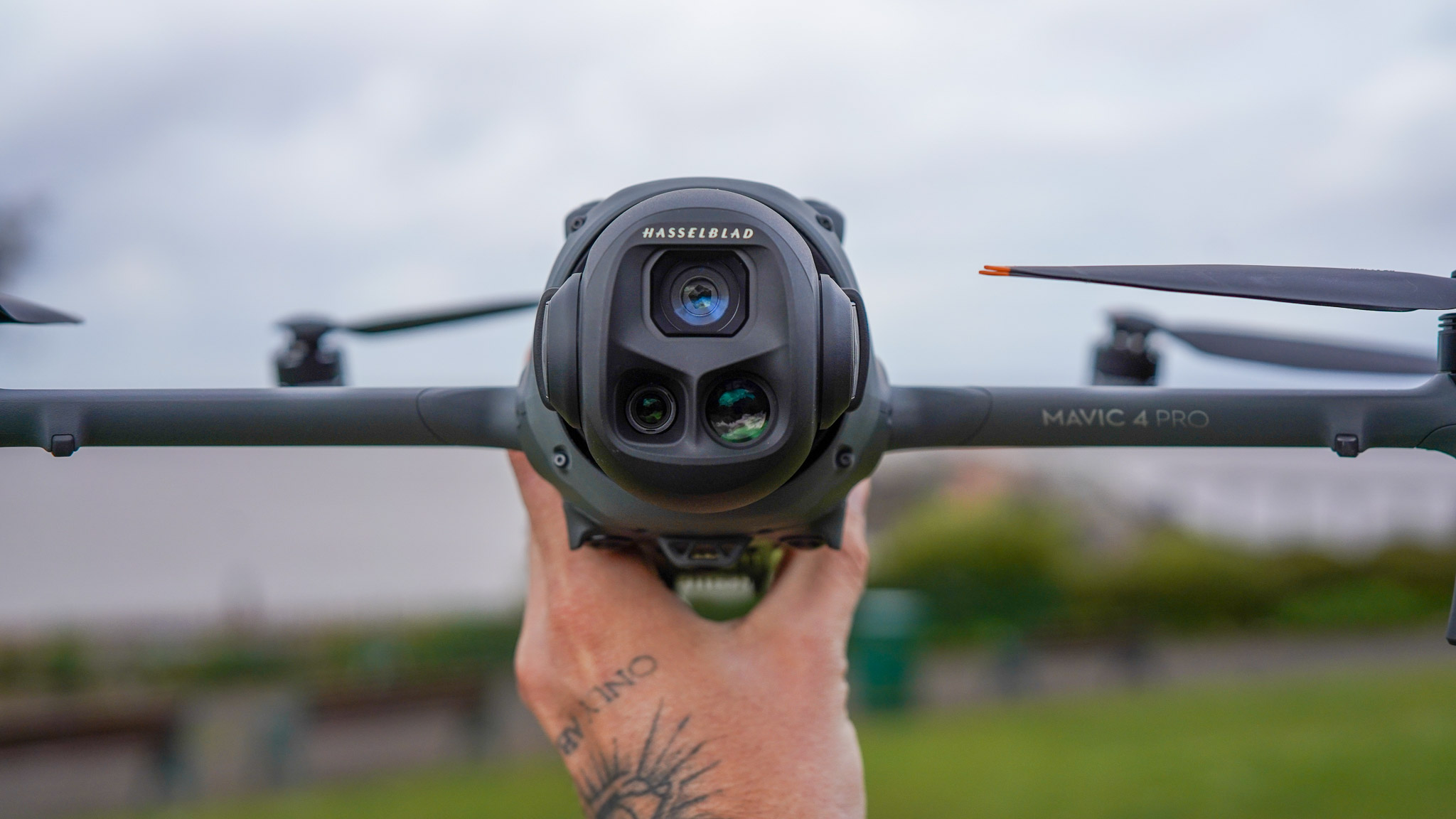
There are some pretty serious upgrades on the Mavic 4 Pro. One of the most important is the Infinity Gimbal with 360° continuous rotation with a 70-degree tilt, allowing you to shoot sequences like never before.
I really can’t emphasise how cool this is. Some of the Quickshots I shot with the Mavic 4 Pro are mind-blowingly smooth, and the drone did them seemingly effortlessly.
The gimbal holds the tri-camera unit, which still includes a wide-angle Hasselblad camera, a medium tele and a tele camera. However, the Hasselblad and tele cameras have new sensors, brighter apertures and higher resolution/framerates (more on this in the Camera performance section).
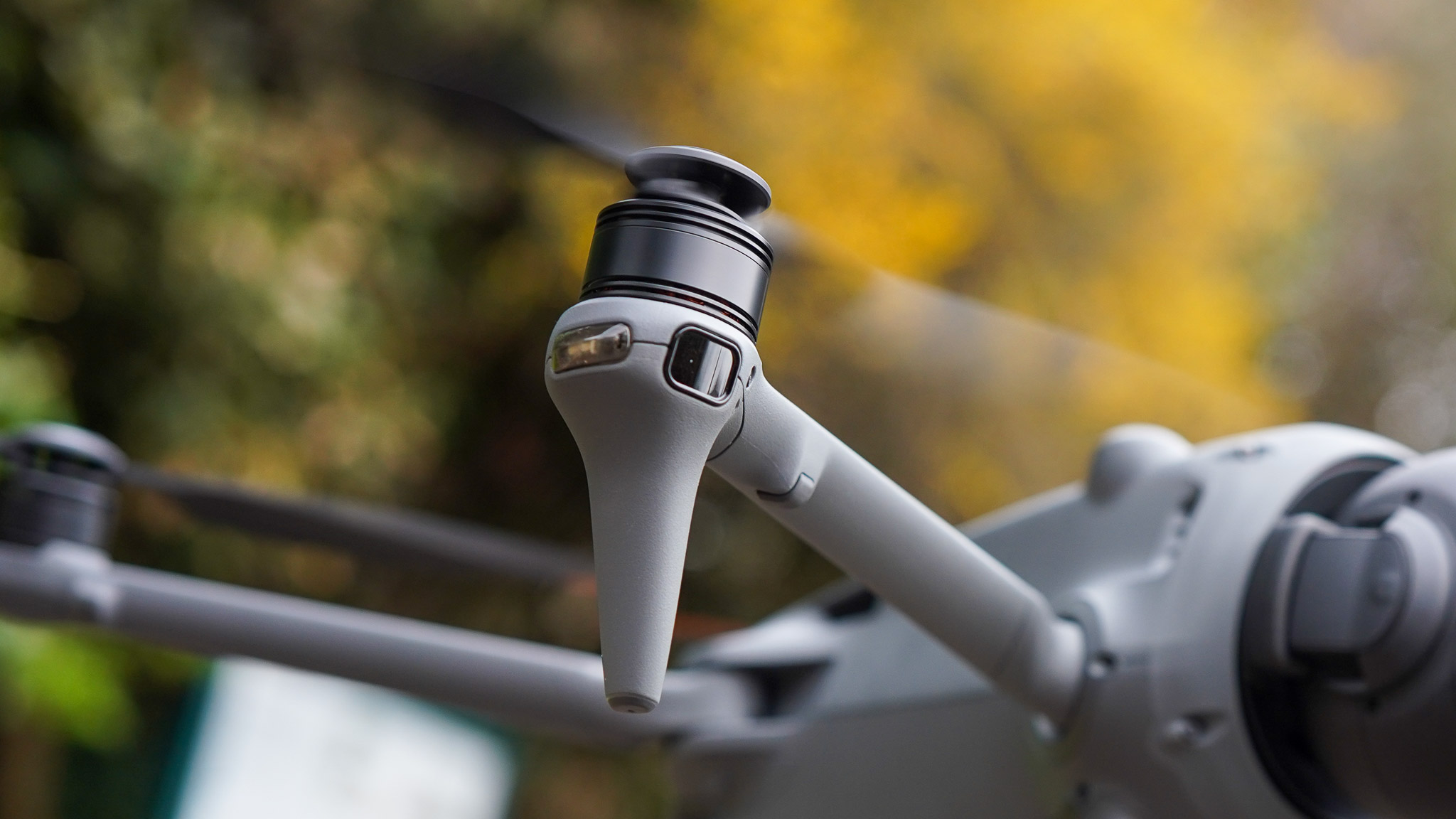
Another big-big improvement is the inclusion of a LiDAR sensor on the front right arm of the drone. The DJI Air 3S added this last year, LiDAR sensors can ‘see’ obstacles better than optical sensors, allowing the Mavic 4 Pro to avoid collision even in low-light conditions. In fact, DJI claims the drone can navigate in conditions as dark as 0.1 lux, practically pitch black.
(Not sure what sort of content you want to create in those conditions, but at least the drone won’t fly into a wall.)
Another change – and this might not be that welcome as others – is that the Mavic 4 Pro is larger and heavier than its predecessor. Coming in at 1,063 g, it’s over 100g heavier than the Mavic 3 Pro (958g), which was 63 grams heavier than 2021’s DJI Mavic 3. It doesn’t make an awful lot of difference, considering you aren’t holding the drone in your hand, but still; it is heavier.
The Mavic 4 Pro being heavier than 250g means you’ll need additional licences in certain countries, such as the UK, where you require an Operator ID as well as a Flyer ID. Also, considering it’s a heavier drone, you will have to be careful when flying it, as it will take longer for the drone to slow down from higher speeds. It’s no different from flying the Mavic 3 Pro, though.
Flight performance
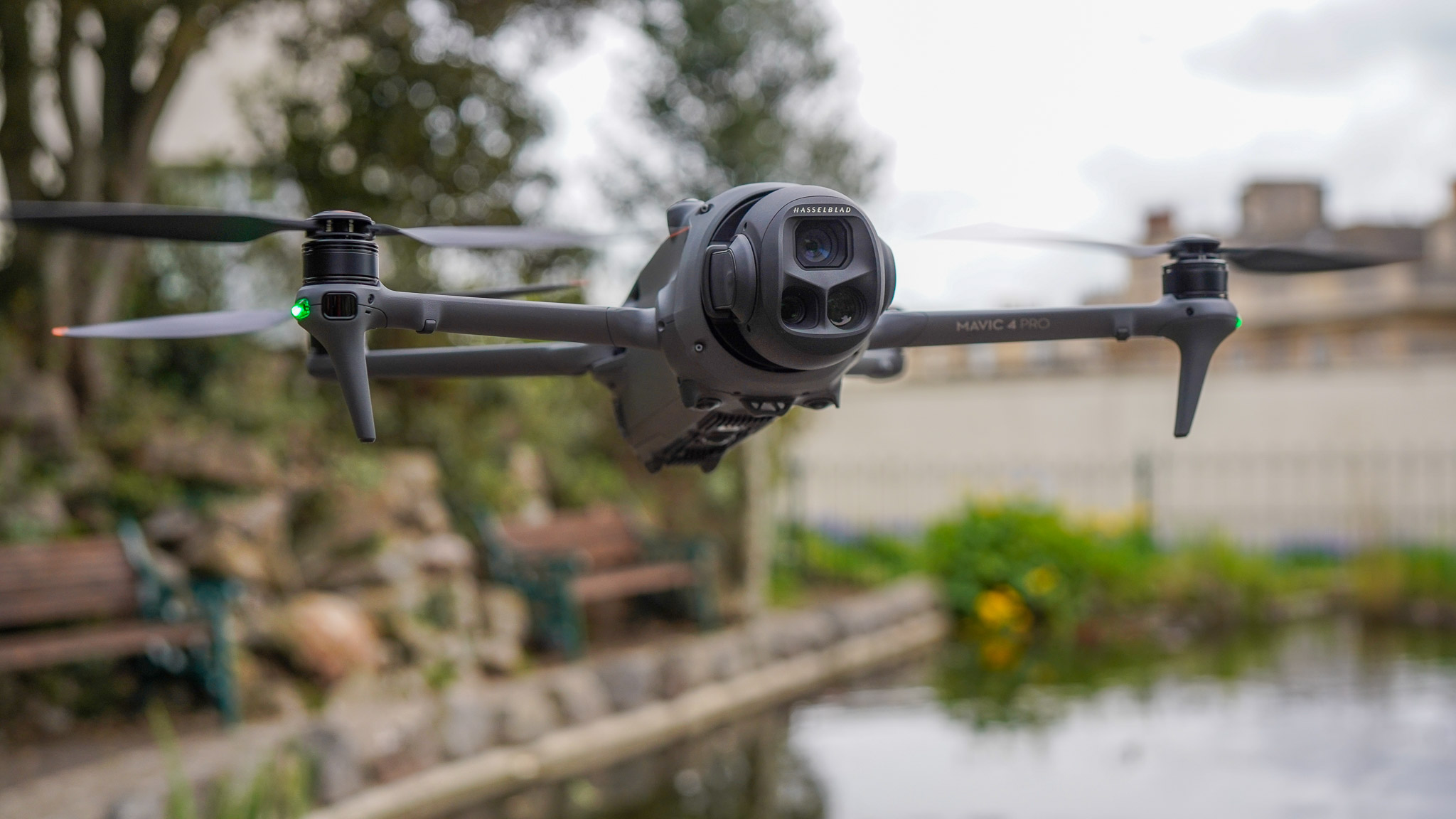
The Mavic 4 Pro flies like a dream. It has a comparatively high wind resistance and can withstand gusts up to 12 m/s (39.4 ft/s). During testing, it coped well in windy conditions that smaller DJI drones struggled with, which really isn’t that surprising. A heavier body and larger propellers will be able to position the drone better, after all.
Of course, it will be pushed by stronger winds, and I did manage to trigger the strong wind warning when flying it over valleys with more wind activity. That said, I had to go out of my way to achieve this. Of course, I wouldn’t fly the Mavic 4 Pro into a tornado, but under normal circumstances, it should be able to cope with air gusts.
The drone can ascend and descend faster (10m/s in Sport Mode vs 8m/s and 6m/s, respectively), and its horizontal speed also improved from 21m/s to 25m/s – that’s 90km/h (~56 mph), people! I must say, after using the Flip for content creation, flying the Mavic 4 Pro at higher speeds required some adjustment. The stopping time and distance were longer, which resulted in some close(ish) calls on occasions.
Hovering accuracy stayed the same, despite the addition of LiDAR. What has improved is obstacle avoidance. In Normal mode, the Mavic 4 Pro can travel up to 18 m/s and, with Obstacle Avoidance turned on (set to stop), it can prevent the drone into walls or people. Of course, I wouldn’t recommend testing it on living creatures, but based on my tests, the system can prevent harm to both the drone and objects.
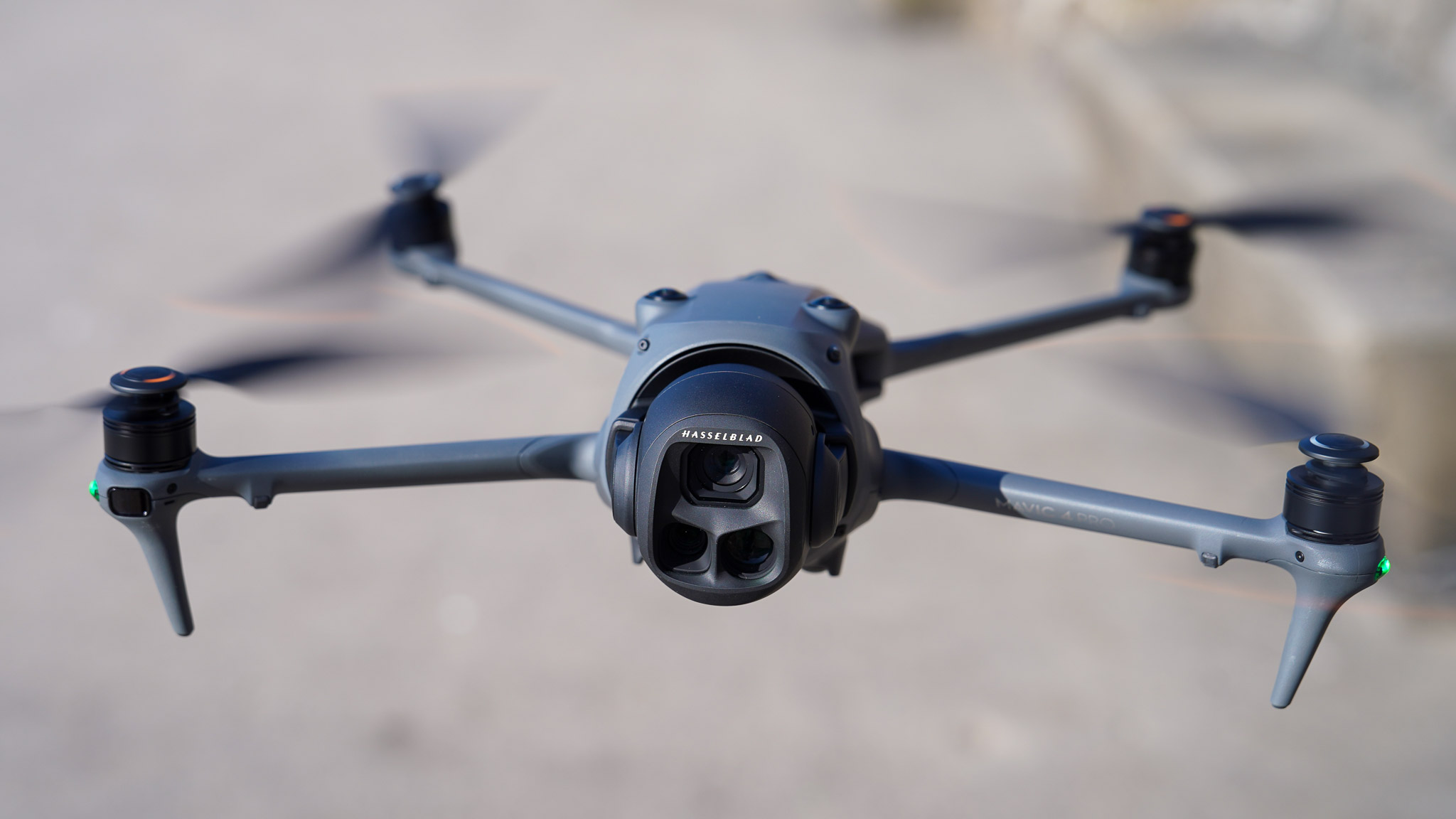
Maximum flight distance is now a staggering 41km (~25.5 miles), which is insane for such a compact drone. Of course, you won’t be flying to Mavic 4 Pro anywhere near this, as in most countries, the drone needs to stay in your line of sight, usually under one kilometre. Plus, countries have different regulations, too; the FCC limits this at 30 km, whilst in Europe, the maximum flight distance is 15 km.
A cool new addition to the incredible flying capabilities is the GPS-free return-to-home (RTH) function. Using its real-time vision positioning and map construction technologies, the Mavic 4 Pro can memorise (!) flight paths and can RTH without GPS. You need adequate lighting for the drone to learn the path, but still, it's a pretty amazing feature to have.
Finally, borrowing from the Flip and other small drones, DJI made the Mavic 4 Pro easier to deploy: unfold the arms, and it’s ready to go. The same goes for the new DJI RC 2 controller (you’ll find more about it below); unfolding the screen will turn the controller on.
Camera performance
The Mavic 4 Pro uses the same tri-camera setup as its predecessor, but as mentioned above, the performance of the cameras has changed.
The Hasselblad camera has a 72° FOV (format equivalent: 28 mm) and is brighter than before (max aperture: f/2.0 vs f/2.8). The medium tele’s specs are the same (FOV: 35°, format equivalent: 70 mm, max aperture: f/2.8), but the tele camera is also brighter (max aperture: f/2.8 vs f/3.4) and it’s zoomed in a bit more (format equivalent: 168 mm vs 166 mm). The latter has the same FOV as the Mavic 3 Pro (15°).
Two of the three cameras have a new chip, including the Hasselblad’s 4/3 CMOS sensor that now has a maximum resolution of 100MP but can also shoot 25MP still images, too (the Mavic 3 Pro’s max image resolution is 20MP). The medium tele is supposed to have a 1/1.3” sensor, but the tele camera also has a new 1/1.15” chip.
I don’t think anyone has massive complaints about the image and video quality of the Mavic 3 Pro. Even smaller drones like the Flip or the Neo produce stunning footage. Neither of these compares to the Mavic 4 Pro, though. The dynamic range and scene recognition are brilliant, enabling even non-pros like me to create stunning videos.
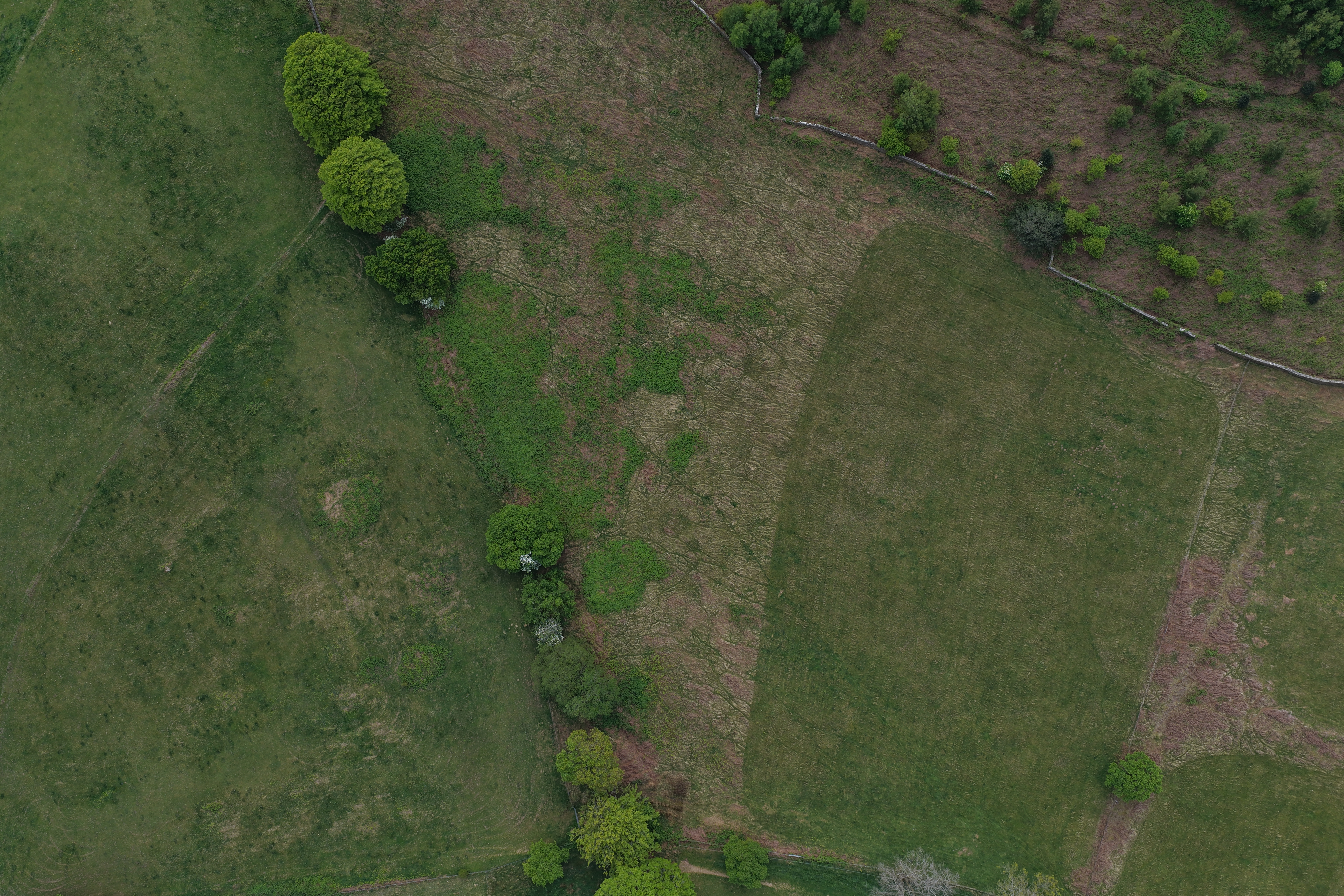
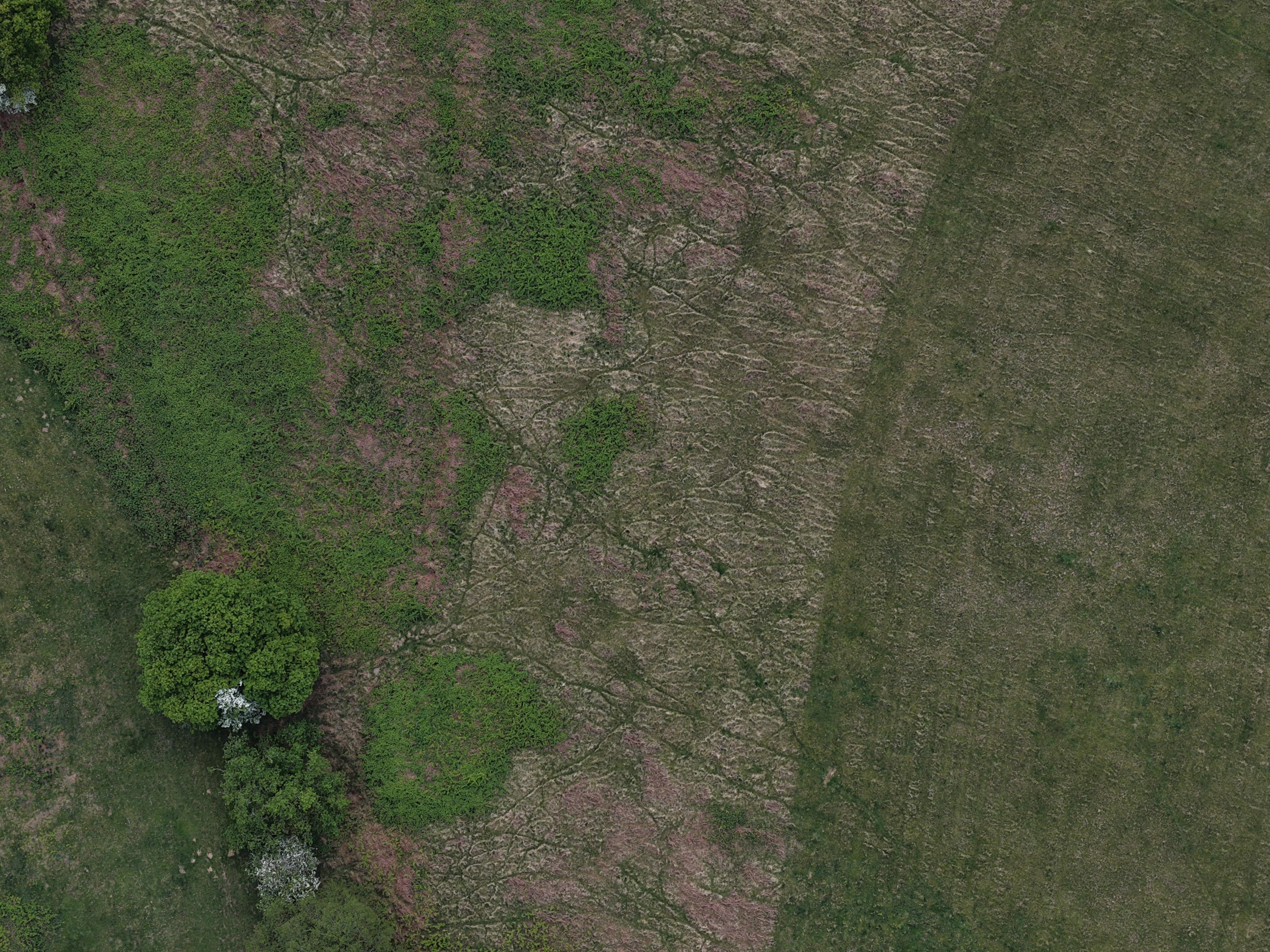

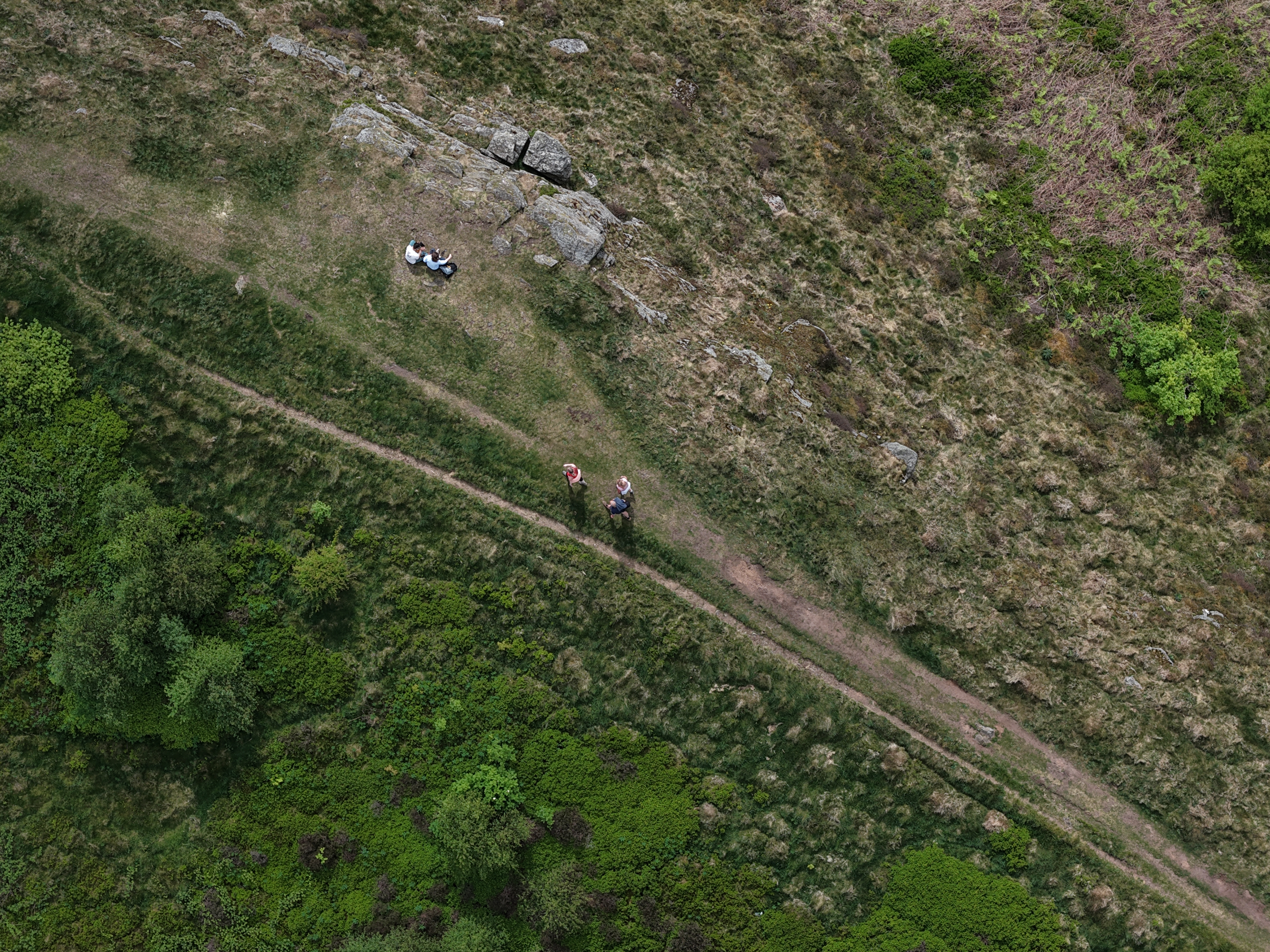
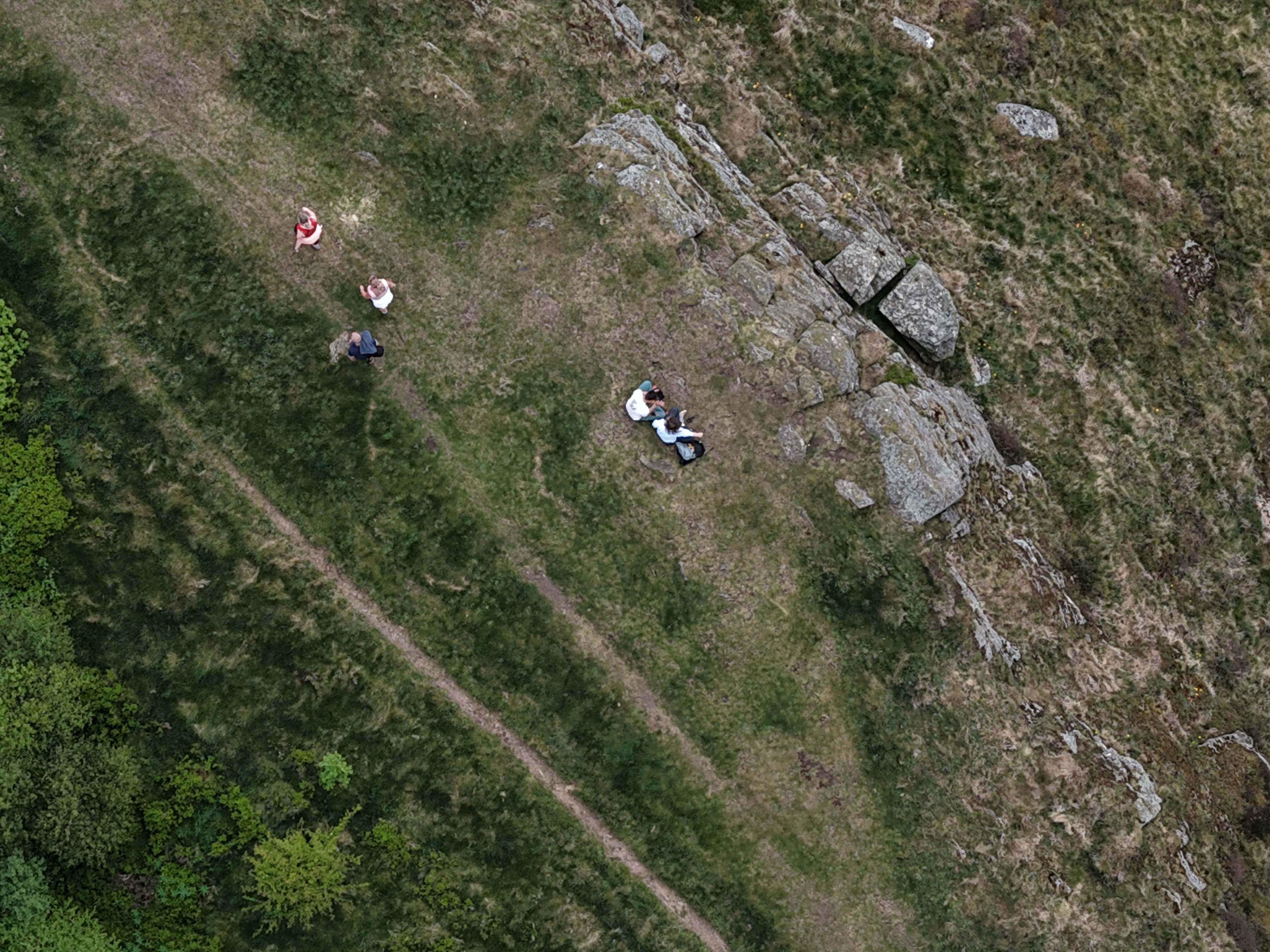
I was worried that DJI wouldn’t include the QuickShots or MasterShots features on the Mavic 4 Pro on account of the pro nature of the drone. Thankfully, I was wrong! Not only are they here, but you get more options than on the small drones.
The new gimbal does wonders stabilising the footage, and the increased tilt and rotation angle allows the drone to keep the frame steady even in stronger winds and through more complex movements.
Interestingly, the Mavic 4 Pro suffers from the same overexposure issue as all other DJI drones. I’d recommend adjusting EV down to -0.7, and only moving it back up if the scene you’re shooting is dark, especially in 6k@60fps HRD mode (Hasselblad camera), which I used for most of my shots: it has 16 stops of dynamic range.
Battery life, charging and flight time
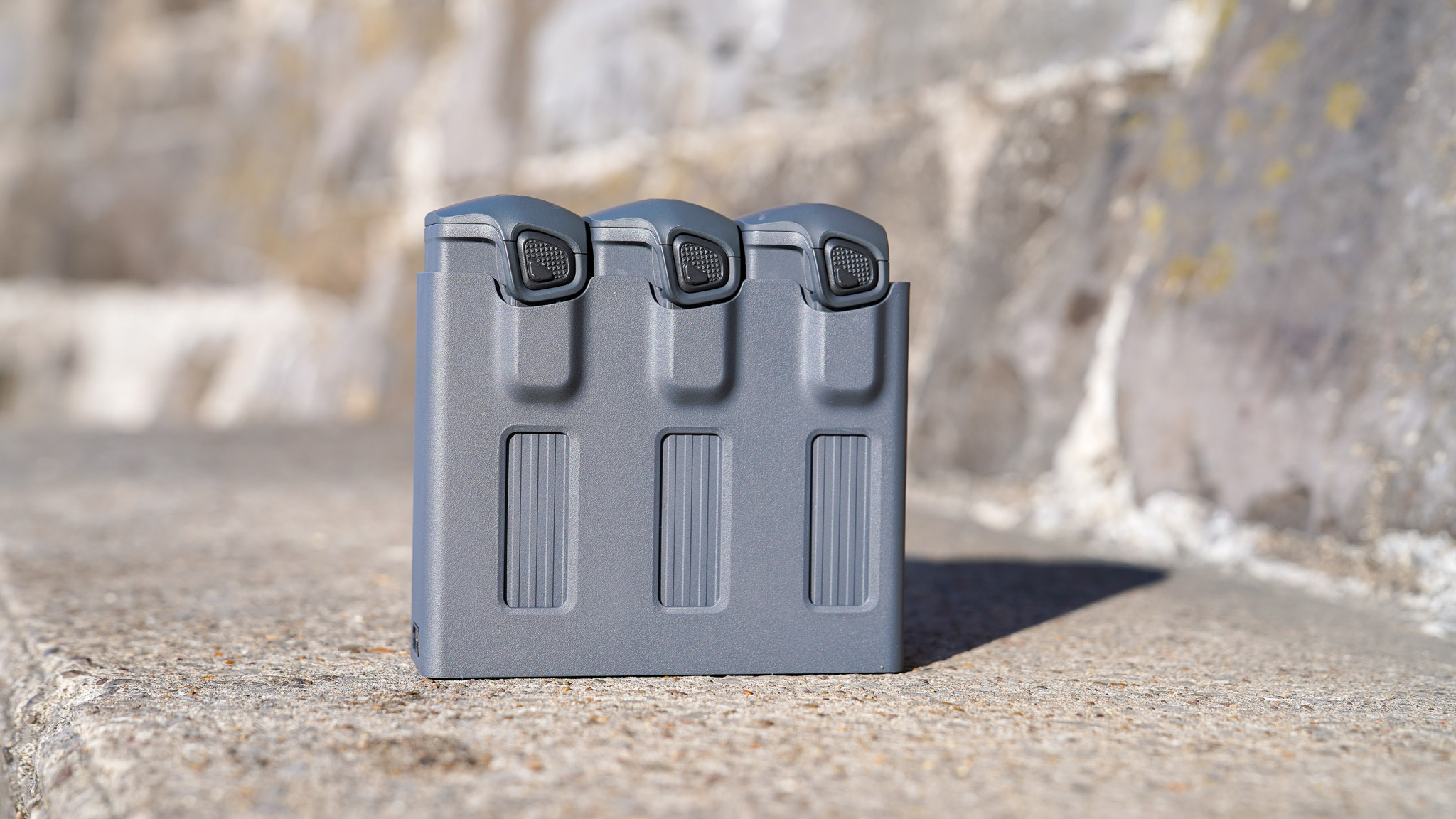
Battery life has increased from 43 to 51 minutes (nearly 20% increase). In fact, the Mavic 4 Pro can hover for longer than the how long the battery lasts on the Mavic 3 Pro (45 minutes). It’s quite reassuring to know that you won’t run out of battery anytime soon when working with the drone.
It’s almost impossible to verify DJI’s battery life data, as real-life conditions will never be as steady as the brand’s lab data. Plus, battery life very much depends on how you fly the drone, in which mode, how you use the camera, and so on. Based on my experience, you can certainly fly the Mavic 4 Pro, even in windy conditions, for around 30-35 minutes.
I used the parallel charging hub and had two spare batteries, which allowed me to fly the Mavic 4 Pro for almost three hours. It takes only 90 minutes to charge three batteries with this charger simultaneously, giving you 150 minutes of flight time – not too shabby! If you happen to have one of the brand’s portable power stations at hand (such as my favourite DJI Power 500), you can also quick-charge the battery on the go.
The DJI RC 2 controller

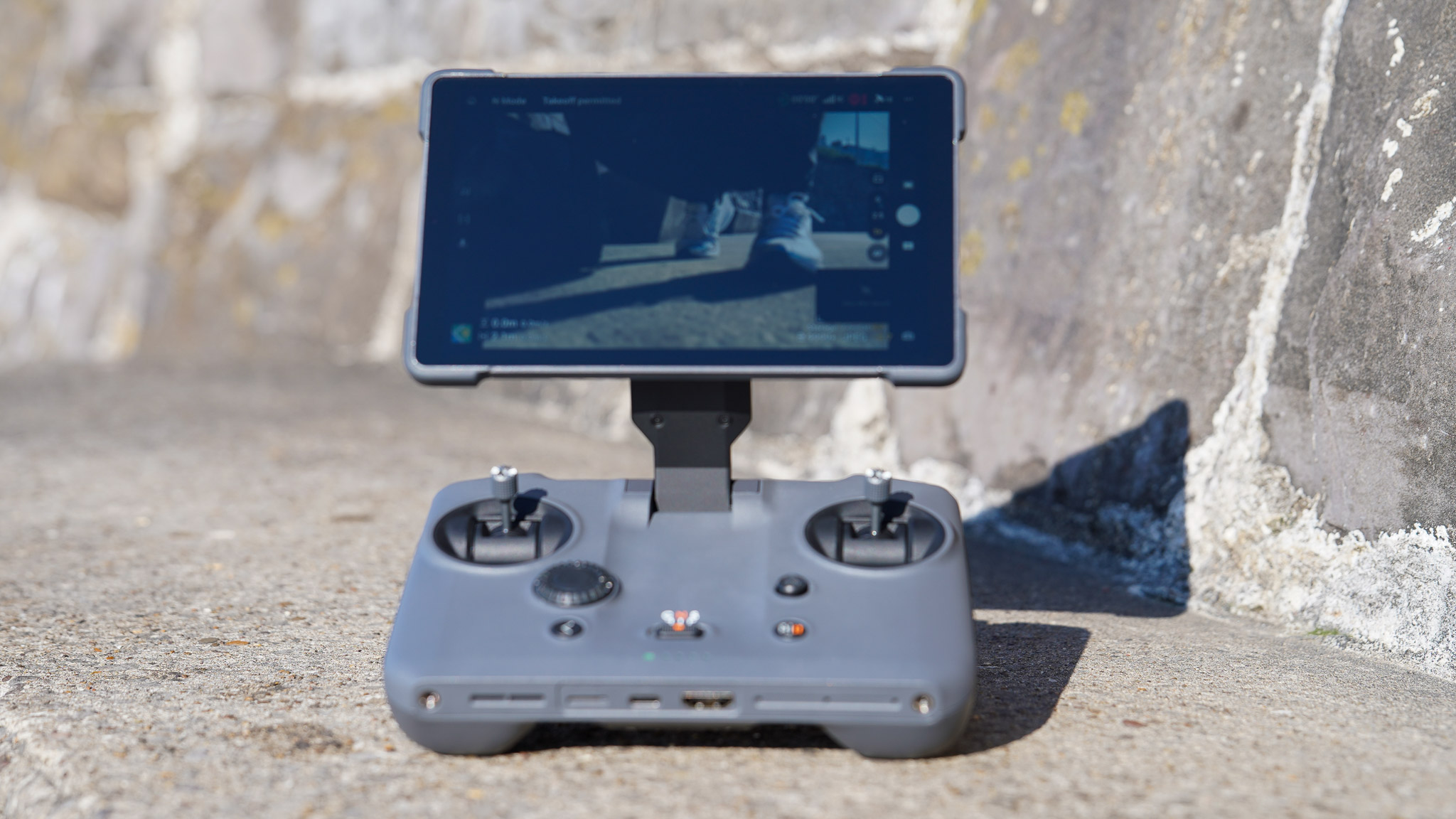
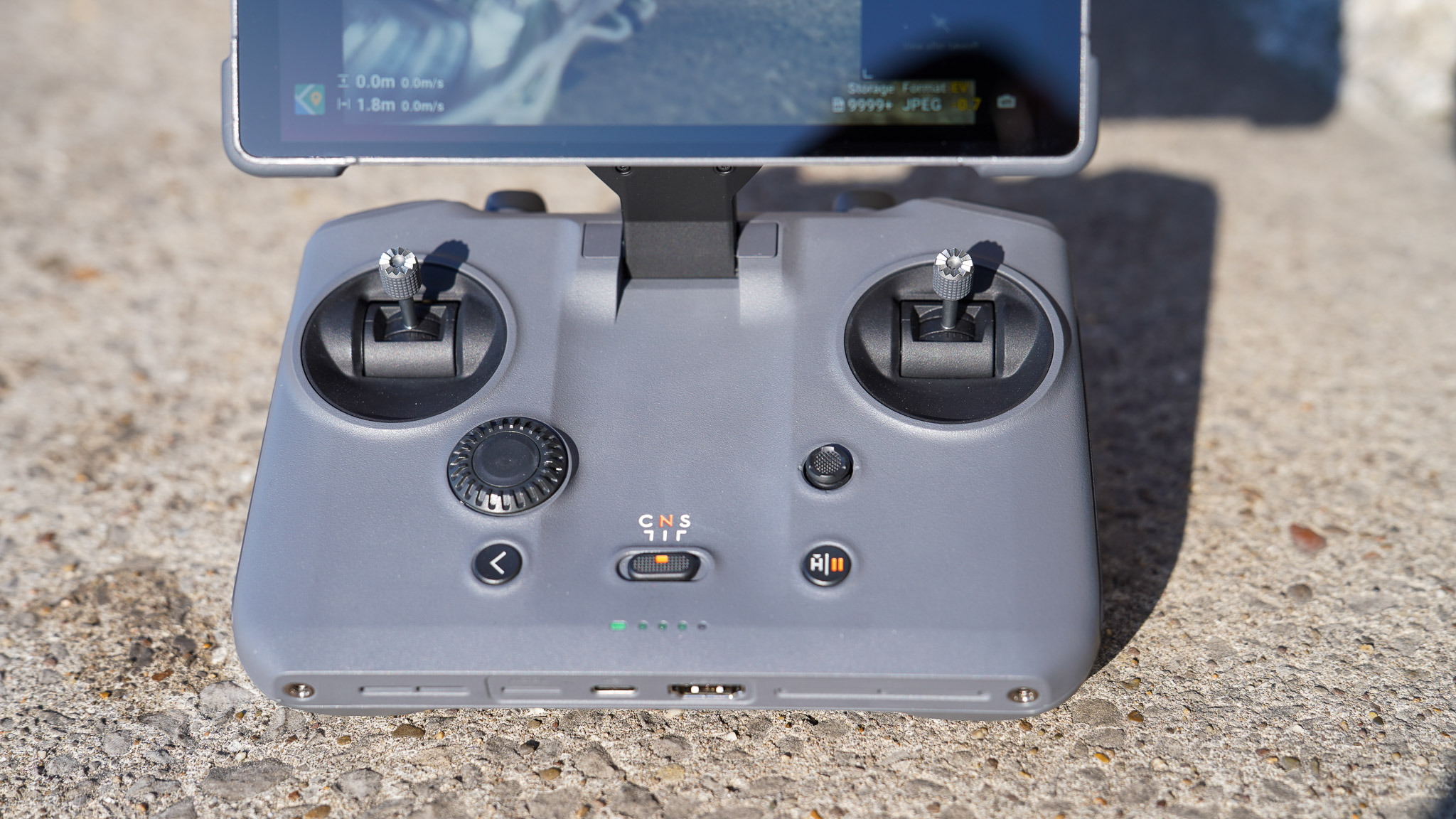
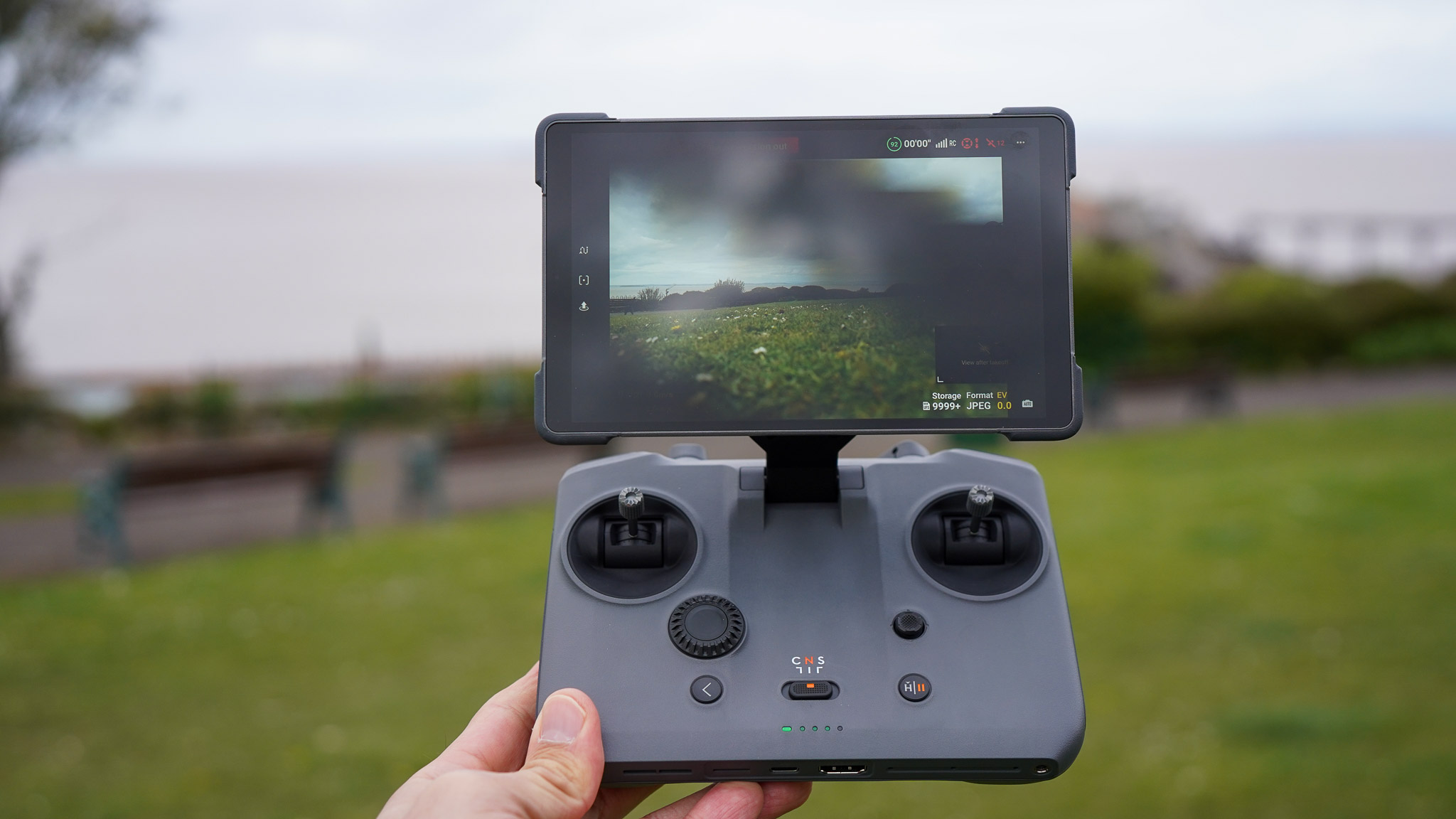
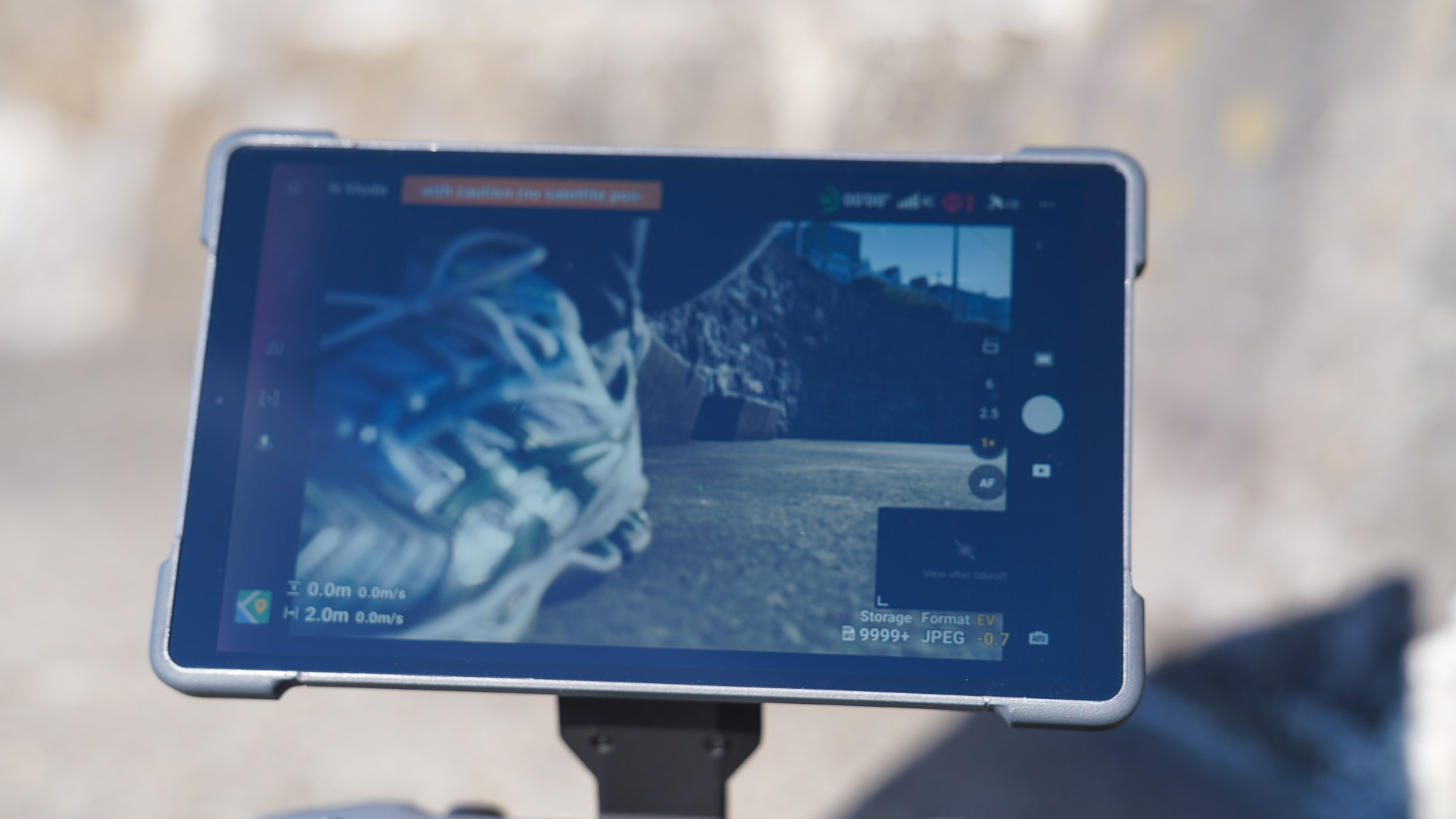
I was almost as excited to try the DJI RC 2 as the drone. The new controller, albeit quite expensive (RRP £879/ €999/ AU$ 1,529), is a fantastic piece of tech that ushers in a number of improvements. As mentioned above, you can turn it on by unfolding the display – not a bad start, but there is a lot more to it than just one quick deploy feature.
My favourite aspect of the DJI RC 2 is that the controller sticks fold with the display, meaning you’ll never have to unscrew them again and risk losing them. Fiddling with the sticks is one of my pet hates, and I’m glad the DJI RC 2 does the work for me.
The 7-inch Mini-LED touchscreen display has a maximum brightness of 2,000 nits, as bright as the Apple Watch Ultra 2. This highly viewable screen not only folds but also rotates, making it easier to frame vertical shots (the Mavic 4 Pro can shoot videos in up to 4K@60fps).
Better still, the controller has a built-in mic and can be connected to the brand’s wireless microphones, like the DJI Mic Mini or Mic 2. It has a 4-hour battery life and even has 128GB of internal storage. In short, it’s a beast that deserves the spotlight as much as the Mavic 4 Pro!
There is only one small grievance with it, namely the on/off button, which is hidden in the top left corner of the display. It's very much in incognito, and took me a while to find. Once I located it, it was smooth sailing from then on, though.
Verdict
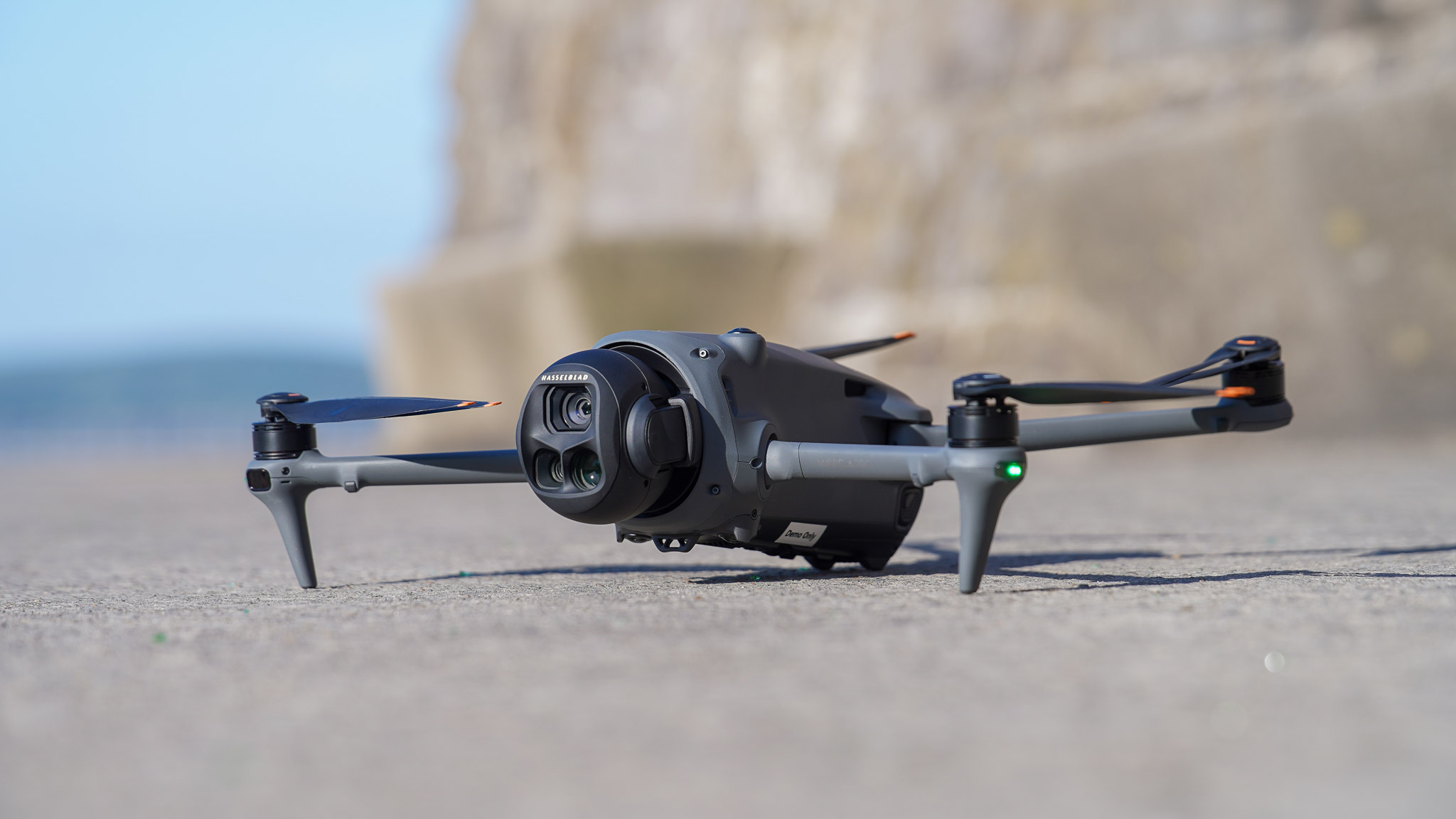
DJI has outdone itself with the Mavic 4 Pro – a feature-packed aerial powerhouse that raises the bar without raising the price. With its groundbreaking Infinity Gimbal, LiDAR obstacle detection, vastly improved image quality, and rock-solid flight performance, it’s a dream for prosumer creators.
Yes, it’s heavier, pricier, and the medium tele camera didn’t get an upgrade, but those are small gripes in an otherwise stellar package. If you’re serious about aerial content but not quite ready to splash out on an Inspire 3, this is the drone to get, provided you’ve got the licence and the budget to match.

Matt Kollat is a journalist and content creator who works for T3.com and its magazine counterpart as an Active Editor. His areas of expertise include wearables, drones, fitness equipment, nutrition and outdoor gear. He joined T3 in 2019. His byline appears in several publications, including Techradar and Fit&Well, and more. Matt also collaborated with other content creators (e.g. Garage Gym Reviews) and judged many awards, such as the European Specialist Sports Nutrition Alliance's ESSNawards. When he isn't working out, running or cycling, you'll find him roaming the countryside and trying out new podcasting and content creation equipment.
You must confirm your public display name before commenting
Please logout and then login again, you will then be prompted to enter your display name.
